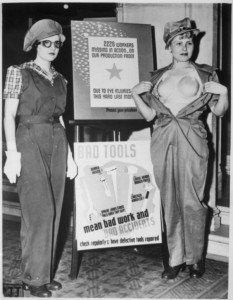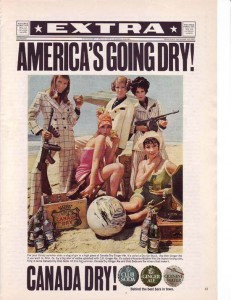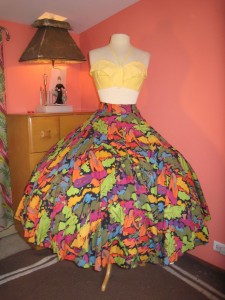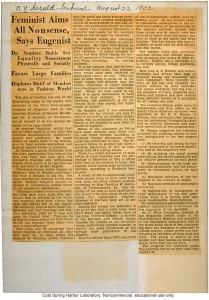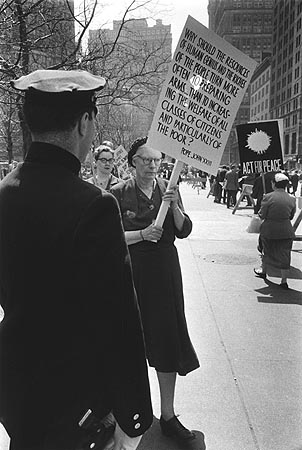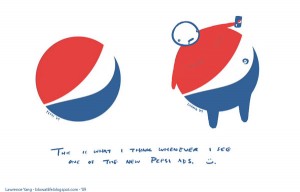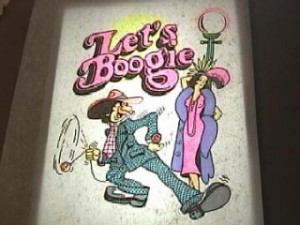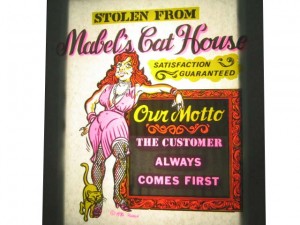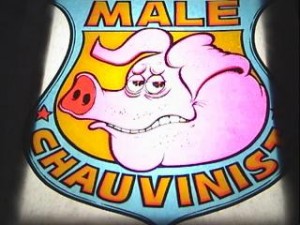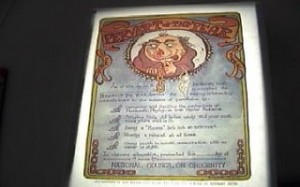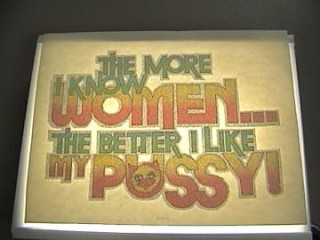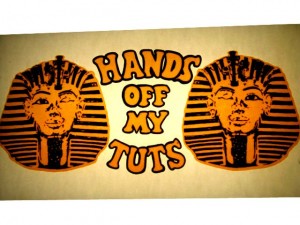 Last Monday (July 27, 2009), during our road trip, I was listening to NPR’s All Things Considered, in which they covered the issue of “Mom Bloggers” and “Blog-Ola.” I’ll skip my general dislike of the term “mom bloggers” applied to any woman with children (“mom bloggers” should only be applied to moms who blog about parenting & mommy issues; it’s a rather inappropriate & dismissive term when applied to those of us discussing non-parenting issues) & get on with the real hub-bub, bub.
Last Monday (July 27, 2009), during our road trip, I was listening to NPR’s All Things Considered, in which they covered the issue of “Mom Bloggers” and “Blog-Ola.” I’ll skip my general dislike of the term “mom bloggers” applied to any woman with children (“mom bloggers” should only be applied to moms who blog about parenting & mommy issues; it’s a rather inappropriate & dismissive term when applied to those of us discussing non-parenting issues) & get on with the real hub-bub, bub.
“Blog-ola” is payola, pure and simple. It doesn’t matter if you’re paid in cash or product.
The dealio-mc-bob isn’t really new, but apparently had the 1,500 attendees of the 5th Annual BlogHer Conference in Chicago in heated debate. Companies give stuff to bloggers with hopes that they’ll get positive press & reviews — that’s nothing new, either; it’s the basic principal behind review product, review copies, etc. And there’s nothing inherently bad about that either. But apparently the internet is rife with the following unethical folks:
* Those bloggers & reviewers who feel either obligated or so free-stuff-happy that they are writing positive reviews &/or giving gobs of press attention to products &/or companies, regardless of the quality of the stuff they receive. If you don’t believe me, check out the show’s transcript.
and
* Those companies & persons (publicists, PR folks, etc.) who feel that bloggers & reviewers work for them when they send them “free” review items. Don’t believe me?
Here’s the most recent & most flagrant offense.
Recently, when I gave a just-deserved negative book review (for a book that calls those with Autism “cursed!”), I sent the link to the publicist/promoter (along with my synopsis, as appropriate) & was sent the following in reply:
I haven’t read your review yet, however, honestly I wish you wouldn’t post a negative review about this or any other author.
To which I replied:
I can understand your disappointment, but I won’t remove or change the review.
I clearly stated from the onset that I was skeptical of cures and while you & the author may feel her story is not intended to be read as a guarantee for others, I can accept that. However, I find the references to autism as “deathly ill,” demonically possessed” and “cursed” more than inaccurate or mere opinion, but unacceptable. I’m aghast that anyone would write such a thing. What’s more that you would, especially after my email about being skeptical, insist upon only favorable reviews; that’s unethical.
I have a responsibility to honestly review books/products, and that is what I have done.
If you’d prefer not to send me any more emails/invitations etc. because you dislike my honest opinions/reviews, that is your decision.
To which she replied:
The purpose of a blog tour is to promote the book and encourage people to buy it.
I fundamentally disagree with blog hosts posting a negative review. I would never ask a blog host to post something they don’t agree with on their blog. If you don’t anything constructive to say…stay silent.
My post was constructive; it warned my readers of the dangers of such a horrible book.
Her email continued:
I know too many authors who also review books professionally. Their stance is to not post bad reviews. It will come back around. It’s kind of an unwritten rule of the industry to not slam a fellow author. Guess blog hosts don’t live by that rule.
So…for this blog tour book…we’ll agree to disagree. It happens.
I would love for you to be a part of future tours…under the condition that you post the interview, and if you can’t that you let me know and post nothing. Deal?
No, Karen, we most decidedly do not have a deal. (And, yes, Karen, I do have the right to publish our email exchange; you courted me as a member of the press and so I have the right to quote you until/unless you state things are off the record.)
First, I did not “slam an author” — I corrected her inaccuracies (found on page 72), her inappropriate implied “cure” (page 110), and her labeling those with Autism as “cursed” (page 111). In fact, I was so incensed by what the author wrote, I could have been far more scathing in my review; but I remained as fair as I could.
Secondly, where you get all all mixed up, Karen, is your confusion over our relationship. It maybe her purpose to promote & encourage people to buy the book; but it’s not mine. Mine is to honestly review the book sent — a book that, in this case, I specifically discussed my reservations about prior to agreeing to receive the book. It doesn’t matter where the book (or product) came from, those rules don’t change.
And that’s what the FTC is concerned about, the ethics of all this.
Oh, and one more thing… Sometimes companies think they can get your free publicity with just the promise of product. If I read one more call for bloggers to post a review and then the first few (or those with the most comments or whatever) will “win” a review copy or review product, I swear, I will scream. Loudly. You cannot, should not, review something you’ve never used/viewed/read; if you do, you are advertising (and lying about use) and that’s where the FTC comes in. Or should come in.
Let me help you, dear blogger who wanted to be treated like a member of the press, to act like a member of the press. Do not to fall prey to Blog-Ola or payola and/or the bullying of persons & companies who would have you do so. Here’s a simple reminder: You do not work for publishers, publicists, companies or individuals that send you review product; you write/review for your readers, and they deserve honesty.
Keep that in mind, and you’ll have nothing to fear from any FTC investigation or legislation.
Think back to those notes passed in school. You cared about what was written on them because you trusted the person who sent it to you. You would have been upset if the note was sent to you because Susie was paid, in cash or product, to do so. Even if the teacher (FTC) never found out, Susie lost a trusted friend (your blog reader). So stop participating in these forms of payola.
Image Credits: High School Student Passing Note to Classmate Sitting Behind Her via AllPosters.com .
.


